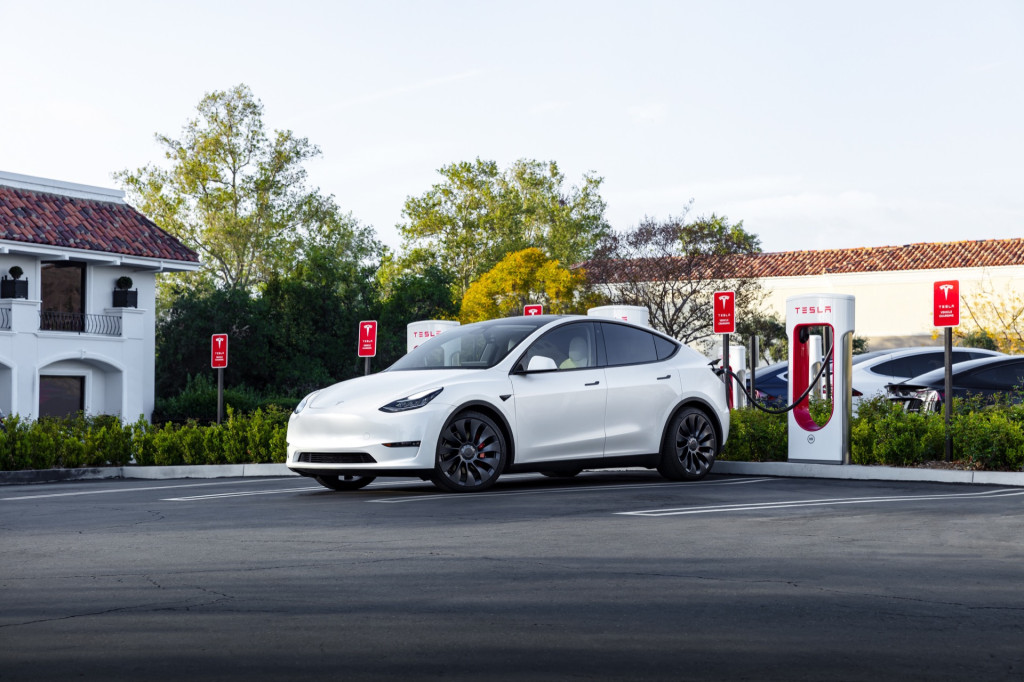Tesla has updated its billing policy with a "congestion fee" aimed at increasing throughput at its Supercharger DC fast-charging stations.
According to the Supercharger fees page on Tesla's website, updated earlier this week, users will now be charged $1 per minute to charge above 90% capacity. Tesla notes that this applies to "busy" stations only, but it makes no note about what defines a busy station or what percentage of Superchargers will have this surcharge.
"This fee encourages drivers to charge only as much as is needed for their trip, rather than all the way to 100%," Tesla says on its website. "This increases the availability of Superchargers so that everyone has access when they need it."

U.S. Tesla Supercharger congestion fee (November 2023)
For people pushing the range limits of their vehicle on a road trip—like a holiday-weekend run—that could be a pretty big surcharge, as the last 10% of charging a car to 100% might take a half-hour or more. That's because charging slows down dramatically once the battery reaches 80% capacity, to the point where getting that remaining 20% could take as long as a charge from 10% to 80%.
Charging a Model 3 battery from 10% to 80% might take about a half-hour, but charging to 100% takes another half-hour—so the surcharge might be in the order of $20. And that's for people who are there right away to unplug, thus avoiding idle fees.
Tesla Superchargers have a reputation for reliability, so broken stations limiting availability is likely less of an issue than it is on other charging networks. But the Supercharger network is about to get an influx of new users.

Tesla Supercharger
While Tesla didn't specifically mention this as a reason for new fees, it's worth noting that EVs from a wide range of brands will start using the Supercharger network next year as Tesla opens it to other manufacturers for the first time in the U.S.
It's also not yet clear how Tesla plans to support some other EVs that charge much more slowly and could remain plugged in for an hour or more before they reach 90%. So while seven automakers are planning a rival network, congestion on the Supercharger network could indeed become an issue in the short term.












